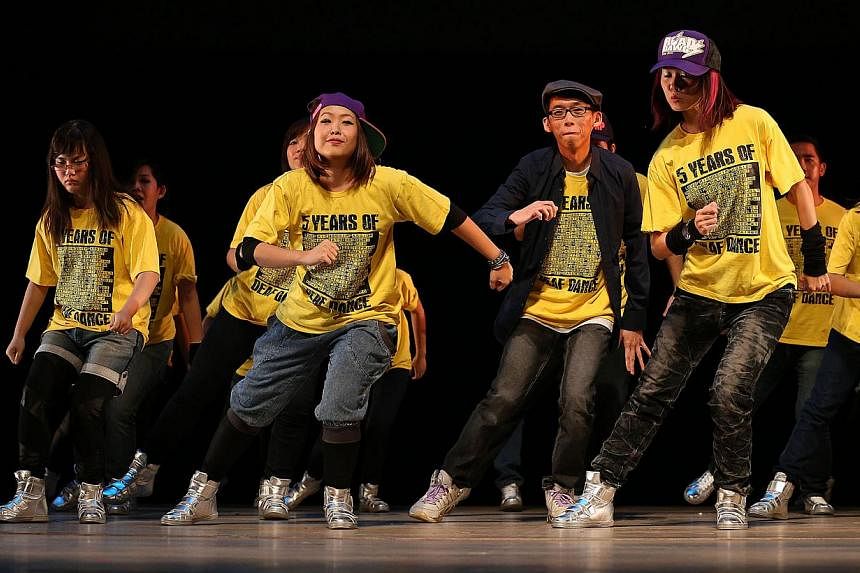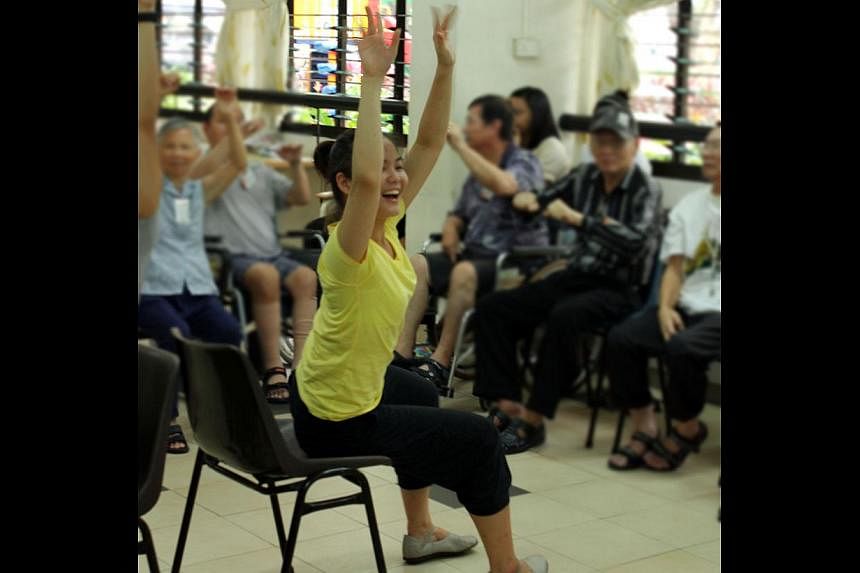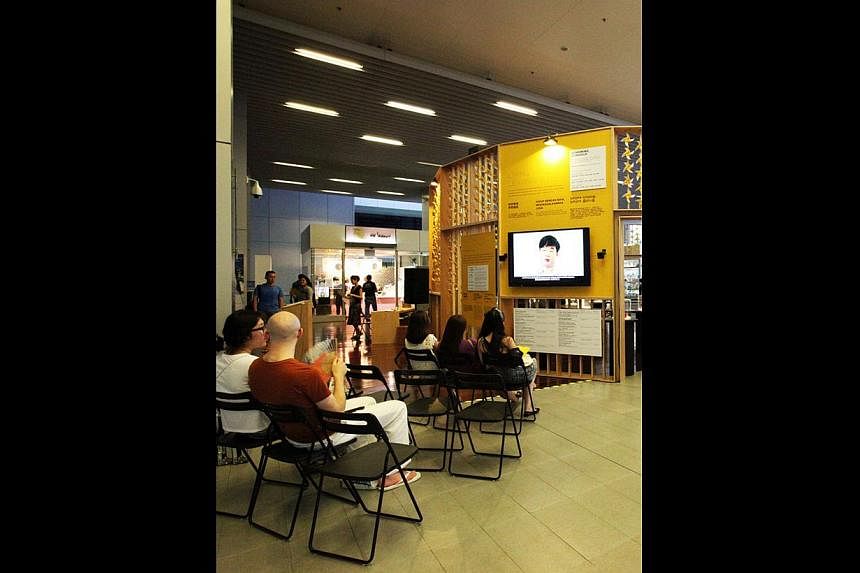In October this year, patients at the Singapore General Hospital will be serenaded by professional and amateur musicians as part of the annual MusicFest@SGH, organised by home-grown musical theatre company Sing'theatre.
The arts have a range of uses, from entertainment to therapy to education, that could help voluntary welfare organisations (VWOs). But while there have been more collaborations between them and arts groups in recent years, Sing'theatre says it still encounters closed doors when it approaches VWOs to work together.
Sing'theatre artistic and executive director Nathalie Ribette says that only about 10 per cent of the organisations are receptive. She adds: "The others don't reply or say that they're not interested or that they have other commitments. Some think it's a nice idea but they have other priorities."
Lack of awareness about what the arts can do is just one of the challenges, even as more VWOs are starting to deploy painting, dancing, music and theatre to help their beneficiaries, alongside the usual forms of assistance and care.
Such arts programmes have been boosted by the Government's recently announced $1.5-million WeCare Arts Fund, which will be disbursed over the next three years. An initiative by the National Arts Council and the five community development councils, it will grant each VWO up to $10,000 annually to run arts-related programmes.
VWOs engaged in the arts have been scaling up their projects. Last year, over 20 senior citizens from the Henderson Senior Citizens' Home and two Asian Women's Welfare Association centres performed in a contemporary dance production, backed by a full orchestra. The work was The Rite Of Spring by the Arts Fission Company and The Philharmonic Orchestra, staged at the Esplanade Concert Hall, which has a capacity of 1,800.
Such arts programmes with community groups can take many forms, from Very Special Arts' visual arts classes to Drama Box's use of forum theatre to explore social issues. The visual arts classes help in the rehabilitation and social integration of people with disabilities, while Drama Box's interactive forum theatre shows, in which audience members can participate, have been used to explore issues from violence against women to race and terrorism.
While the number of such programmes is increasing, the process of getting such projects off the ground is still difficult. As the field is relatively young, there is not much precedent to follow or infrastructure in place to pave the way.
Both arts groups and VWOs lack people with experience in managing community arts projects. As a result, a lot of the time, both artists and VWOs are reaching out to each other but cannot quite craft projects in a creative and sensitive way to meet each other's needs.
Drama Box associate artistic director Koh Hui Ling says: "The social workers are very good at what they're doing, which is engaging the community. And the artists are very good at what they're doing, which is creating art. The question is, how can we partner these people, such that they can support each other?"
In the first place, it is not easy for artists and VWOs to establish a working relationship. Koh says the lukewarm response is due to a lack of understanding and adds: "The biggest challenge is to get people to understand what we're trying to do. Some people think theatre or drama must mean only acting, while others ask if it's going to appear on Channel 8."
Drama Box has been working with the community since 2000 and it usually puts up between one and three projects a year. Its last project, Both Sides, Now, was a multi-disciplinary arts experience that addressed dying well and end-of-life issues.
Incorporating short films, conceptual art pieces and a multimedia play, it took place at Khoo Teck Puat Hospital last November.
Some arts groups may also be resistant to working with VWOs, as they are worried about being pigeonholed as a community arts group.
Contemporary dance group Arts Fission Company conducts creative movement-based sessions at eldercare homes, and it is developing training manuals and instructional DVDs to facilitate the teaching of the programme at other centres.
Its artistic director Angela Liong says: "Some people might be worried about being pigeonholed, like, 'Oh, Arts Fission, they work with old people'. They are very uncomfortable because of this notion of branding. If you're a high-class brand, you don't want to sell a $5 T-shirt."
She cites examples of established artists such as French dancer-choreographer Jerome Bel and German ballet legend Pina Bausch, who both worked with marginalised communities - the intellectually disabled and the elderly respectively. Bel's acclaimed performance, Disabled Theater, will play here this September as part of the Singapore International Festival of Arts.
Liong says: "This is not compromising our art form, but using what we practise to benefit a different kind of audience."
Then there are cases where arts companies want to work with VWOs, but the latter face their own set of difficulties when it comes to pairing with an arts company. One of the biggest obstacles for non- profit VWOs is coming up with the funds to pay the artists for their time and expertise.
Mr Christopher Yeow, executive director of Very Special Arts, says: "We are a VWO and don't have much money to offer artists. A lot of it depends on their interest. We recognise that for artists, it's a job and they cannot afford to provide a voluntary service, so we pay them but we cannot afford to pay them market rate."
Aside from visual arts and theatre classes, Very Special Arts also produces an annual concert performed by people with disabilities, Welcome To My World. Many of the artists who teach these classes or help out with the concert do so pro bono or are paid a token sum.
There is also the need to train artists to work appropriately with the VWO's beneficiaries, especially if the target group has special needs. Most VWOs do not conduct formal training for the artists, for whom the learning is on-the-job.
Ms Jane Goh, head of clinical services at the Singapore Association of Mental Health, says: "We have artists who are willing as well as those who are hesitant. Generally speaking, there is a lot of anxiety and hesitation when it comes to teaching people with a mental health condition."
The association works with artists to conduct visual arts classes for people with mental illnesses and Ms Goh adds that there are plenty of things which artists with no training may not know about.
She says: "For example, it's good to know what materials can trigger certain things for people with schizophrenia. Watercolour is too fluid and it can be a little uncontrollable so, at the beginning, try to go for controlled materials such as crayons or pencils."
Finally, when it comes to evaluating the success or failure of an arts programme, many VWOs do not have suitable yardsticks in place. While the benefits of arts programmes may be social or emotional, many organisations still focus on quantitative, measurable results.
Drama Box's Koh says: "Sometimes, people wonder why they should give the artists money when they can give it straight to the visually handicapped. I think understanding the value of the arts is something that needs to change.
"Sometimes, you hear remarks like, 'Huh, you worked so long, I spent X amount of money, but you only do a show like that? You cater only to 200 people?'"
An important step forward is to bridge the gap between the two sides with organisations such as ArtsWok, a private company set up in 2012 to act as a go-between for partners in such projects, from VWOs to arts companies and corporate sponsors.
Last year, the company held six networking and dialogue sessions on arts-based community development, called The Greenhouse Sessions.
Ms Ko Siew Huey, co- founder of ArtsWok, says: "Essentially, what's happening here is a multi-sectoral partnership and it's an amalgamation of all these different people with different interests and different backgrounds. They may not necessarily speak the same language, even though they have a common purpose. So that sort of intermediary to broker an exchange is necessary."
She hopes that with better understanding and communication, the arts will become rooted in the community. She says: "Hopefully, people will start to see this as a way of life and break away from the idea of these arts-based activities as just one-off programmes."
Wishlist for community projects
Arts groups and voluntary welfare organisations (VWOs) tell Life! what is needed.
1 Matchmaking
Before the working process even begins, it is key to find the right match between VWOs and arts companies. Currently, a lot of partners get to know each other through word of mouth or by cold calling. Networking sessions such as the National Arts Council's Let's Connect! exist, but they are few and far between.
To facilitate matchmaking between Voluntary Welfare Organisations and arts companies, there should be:
- More networking sessions for stakeholders such as Voluntary Welfare Organisations, arts companies and potential corporate sponsors to connect
- An online database of Voluntary Welfare Organisations and arts companies which are open to working with each other. This could allow interested parties to find each other more easily
2 Training
When working with Voluntary Welfare Organisations, artists and trainers should be sensitive to the needs of the community, and understand how best to engage them. This is especially so when working with communities which they may not be as familiar with, such as the elderly or the disabled.
To ensure that artists and Voluntary Welfare Organisations can engage each other meaningfully:
- Organisations can hold training sessions or workshops for artists to learn more about the needs of the community, and how best to work with them
- Artists and Voluntary Welfare Organisations can work together to develop appropriate toolkits and activities for working with different communities, so that a syllabus does not have to be created from scratch each time
3 Evaluation
There are very few yardsticks for evaluating how a programme is doing and there tends to be a focus on tangible, quantitative markers of success, such as audience numbers or physical change.
However, arts programmes often offer more long-term, intangible benefits, which are not always easily measurable. To measure the impact of arts programmes accurately:
- Increased documentation and research of such programmes should be conducted, to understand the real reach and the benefits of the project
- There needs to be an understanding and appreciation of arts programmes beyond the easily measurable.





